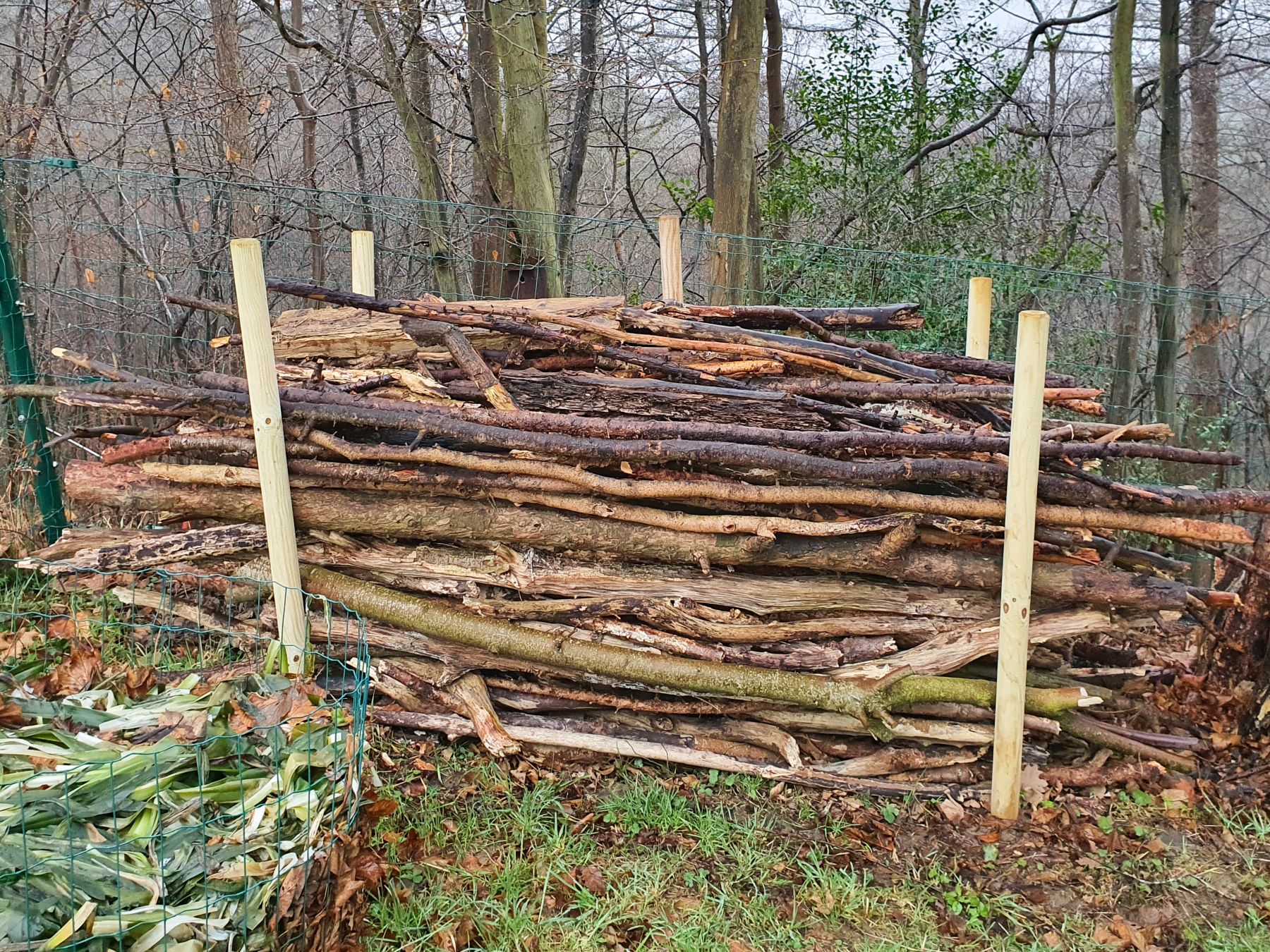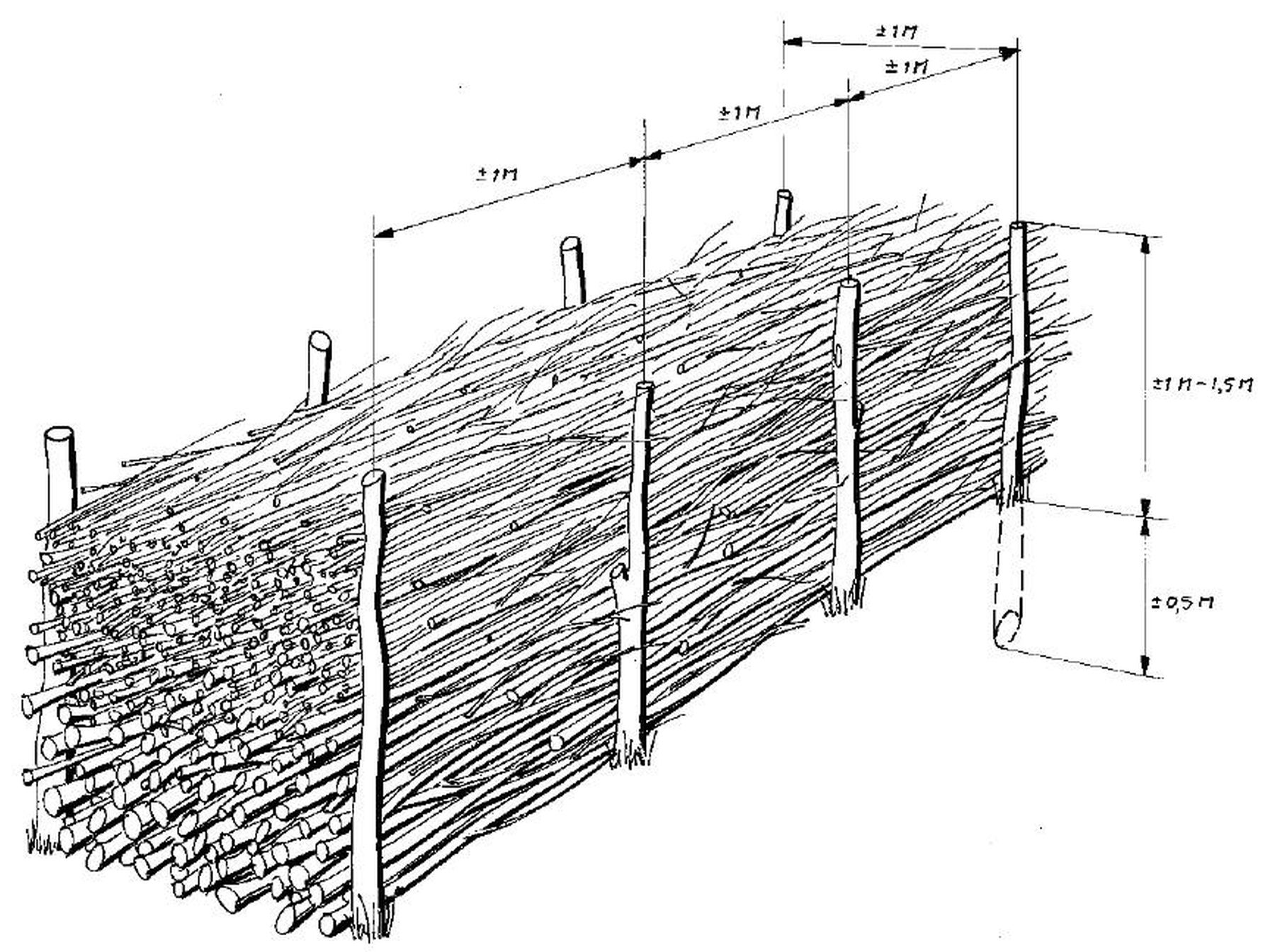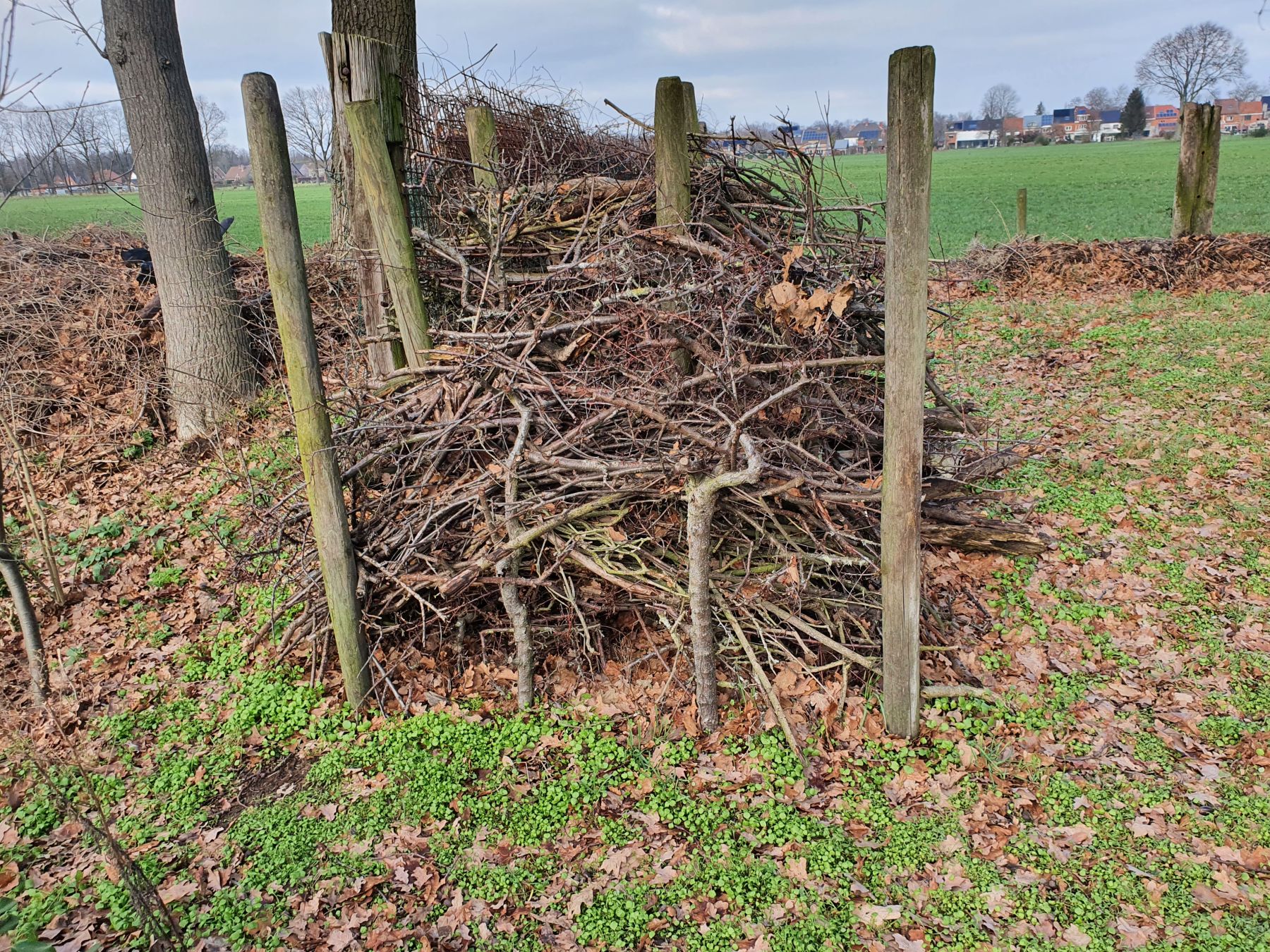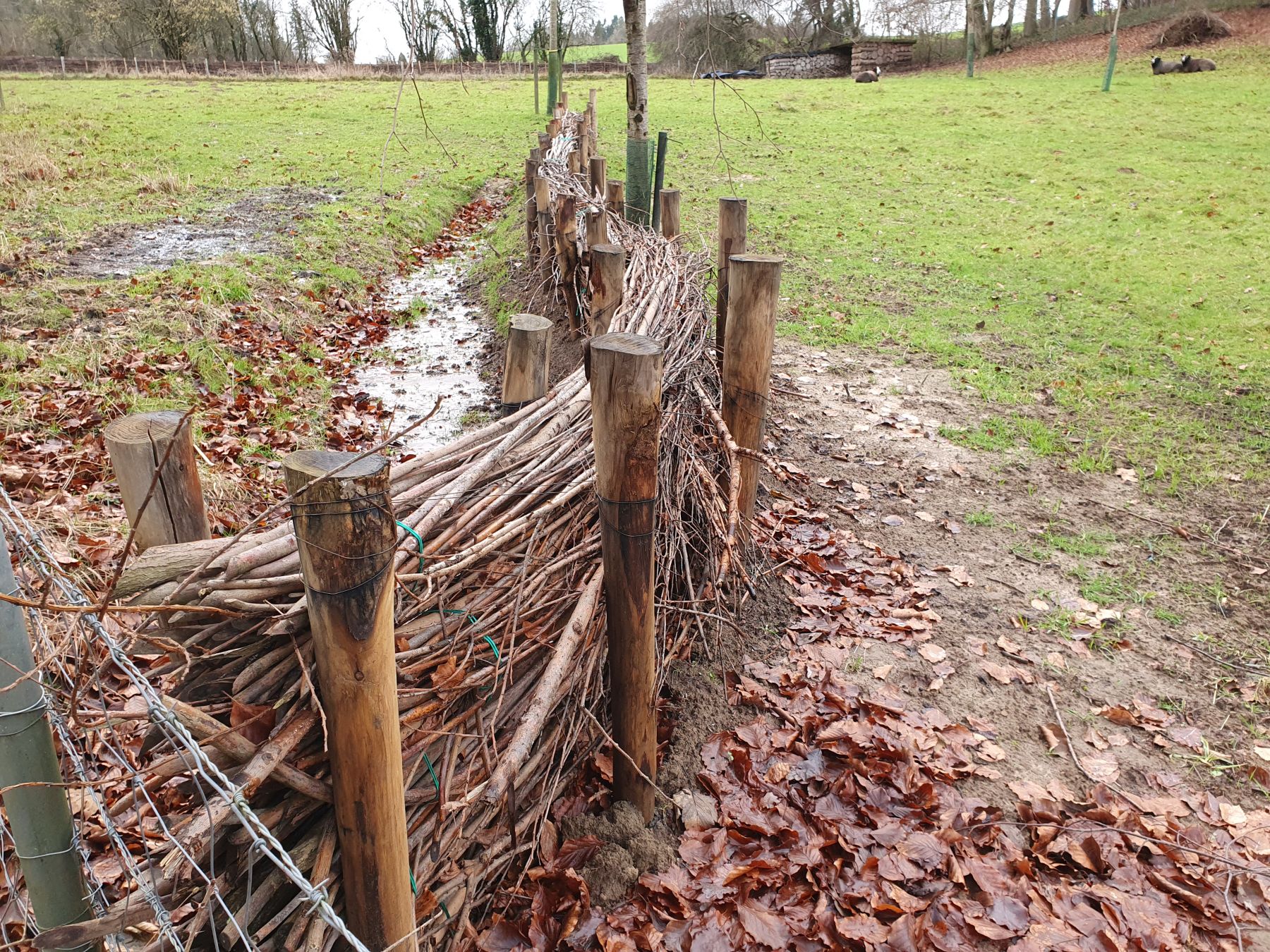



.jpg)
Dead wood brings life !
04/02/2023
A pleasant winter job in the garden is the construction of a dead hedge. It really fits well in a natural garden, because a dead hedge is a complete ecosystem in itself. It is an ideal resting place for numerous insects and spiders that find shelter here. These in turn attract birds in search of food. Some birds and mice make their nests between the branches and there are even some butterflies known to deposit their eggs on dead branches. Amphibians, grass snakes and hedgehogs use dead hedges for hibernation. As time passes by mushrooms, mosses, ferns will grow on the hedge as well as other plants that sprout from seeds brought by the wildlife. A dead hedge will quickly result in lots of new life in the garden.
How do you get started? A dead hedge is a simple construction of 2 rows of wooden posts between which you can stack your pruning waste. Ideally, you use thick branches or untreated posts (5 to 8 cm in diameter, 1.5-2 m in length) that you place firmly in the ground (0,5m depth) at half to a meter from each other. The hedge can be as long as you want. The amount of green waste you have most likely determine its length. Then, place thick branches at the bottom in a horizontal direction and fill with thinner branches on and possibly even leaf litter so that it forms a dense hedge. You add multiple layers and can go up to 2 meters high, but often 1 meter is enough. Choose a quiet spot in the garden as a dead hedge lasts for years and will degrade on the spot. A dead hedge can be made tight or loose. You determine the style you like. Some people even braid the branches together for an even sturdier effect.
By creating a dead hedge, you give nature a helping hand, give your pruning waste a new destination while enjoying a beautiful natural fence. Get started with all that dead wood!
Comments
No comments have been added yet. Be the first to add a comment. Add a comment


